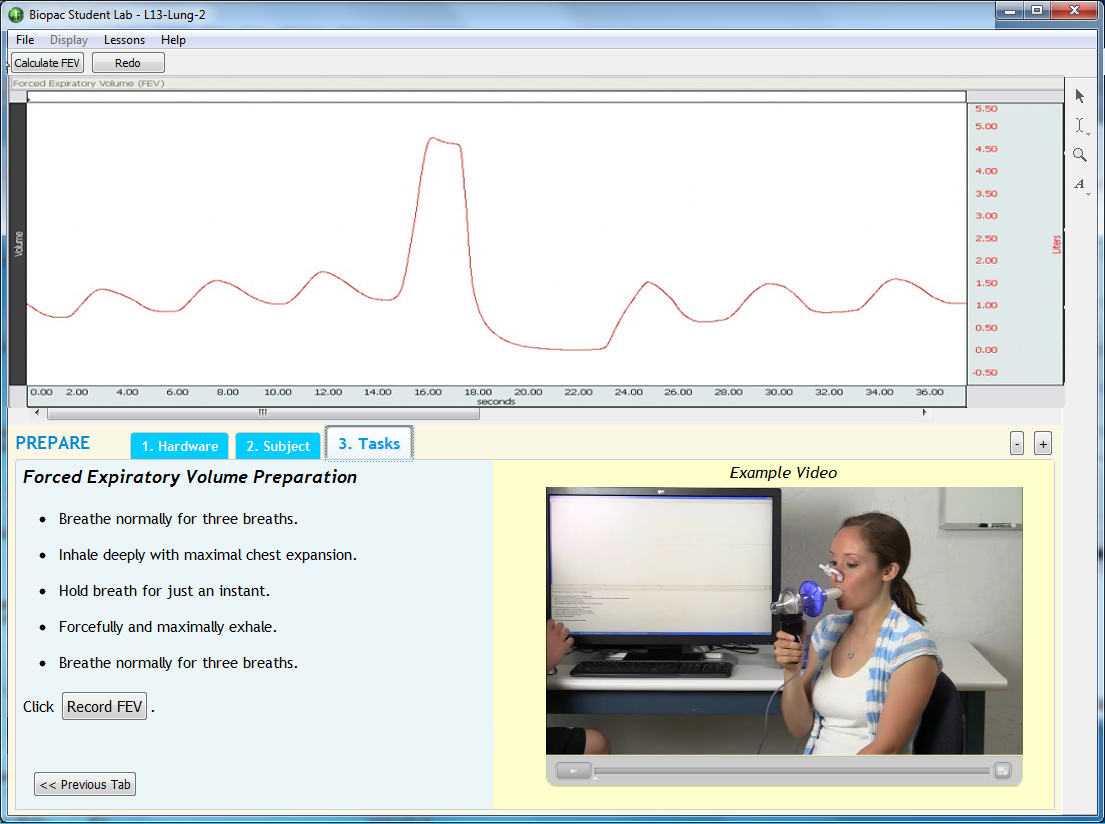L13 Pulmonary Function II

- Great introduction to Pulmonary flow studies.
- Automatically calculates values for FEV and MVV.
- Uses a clinical grid for easy interpretation of the data.
Experimental Objectives
-
To observe experimentally, record and/or calculate forced expiratory volume (FEV) and maximal voluntary ventilation (MVV).
-
To compare the observed values of FEV with predicted normals.
-
To compare MVV values with others in your class.
Tasks Performed by the Student
BSL Lessons are designed to allow at least four students to record and save data in a normal lab period (60-90 minutes). Typically, labs work most efficiently with three or more students working together at each BSL station.
- Record airflow.
- Breathe normally for three complete respiratory cycles.
- Inhale as deeply as they can and hold their breath for an instant.
- Exhale as quickly and completely as they can.
- Resume normal breathing for three cycles.
- Breathe normally for five complete cycles.
- Breathe quickly and deeply for 12-15 seconds.
- Return to normal breathing for 5 more cycles.
Videos
BSL 4 L13 Pulmonary Function - FEV and MVV
BSL L13 MVV
Biopac Student Lab Student Download
Lesson Hardware
This lesson requires a Biopac Student Lab (BSL) System and the following hardware. If your BSL System does not include all hardware items, expand your system by selecting required items below. For more details, review the Lesson: L# BSL Lessons - see the Lab Manual or launch BSL; A# and H# BSL PRO Lessons, click the PDF link above to review full setup, recording, and analysis procedures.
| Item | Name | Cart |
|---|---|---|
| Select Option | Airflow Transducer | Add to Cart |
| AFT3 | Disp. Noseclip, 10/pk | Add to Cart |
| AFT2 | Disp. Mouthpiece, 22 mm 10/pk | Add to Cart |
| AFT6A | Cal. Syringe, 600 ml | Add to Cart |
Stay Connected